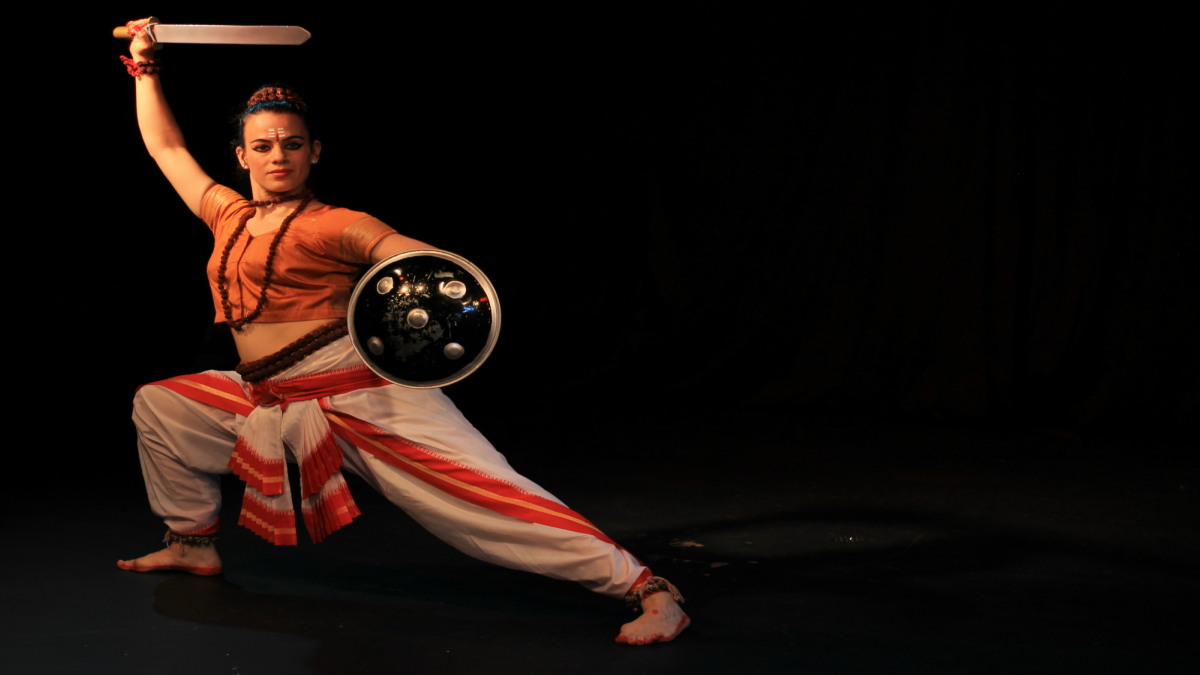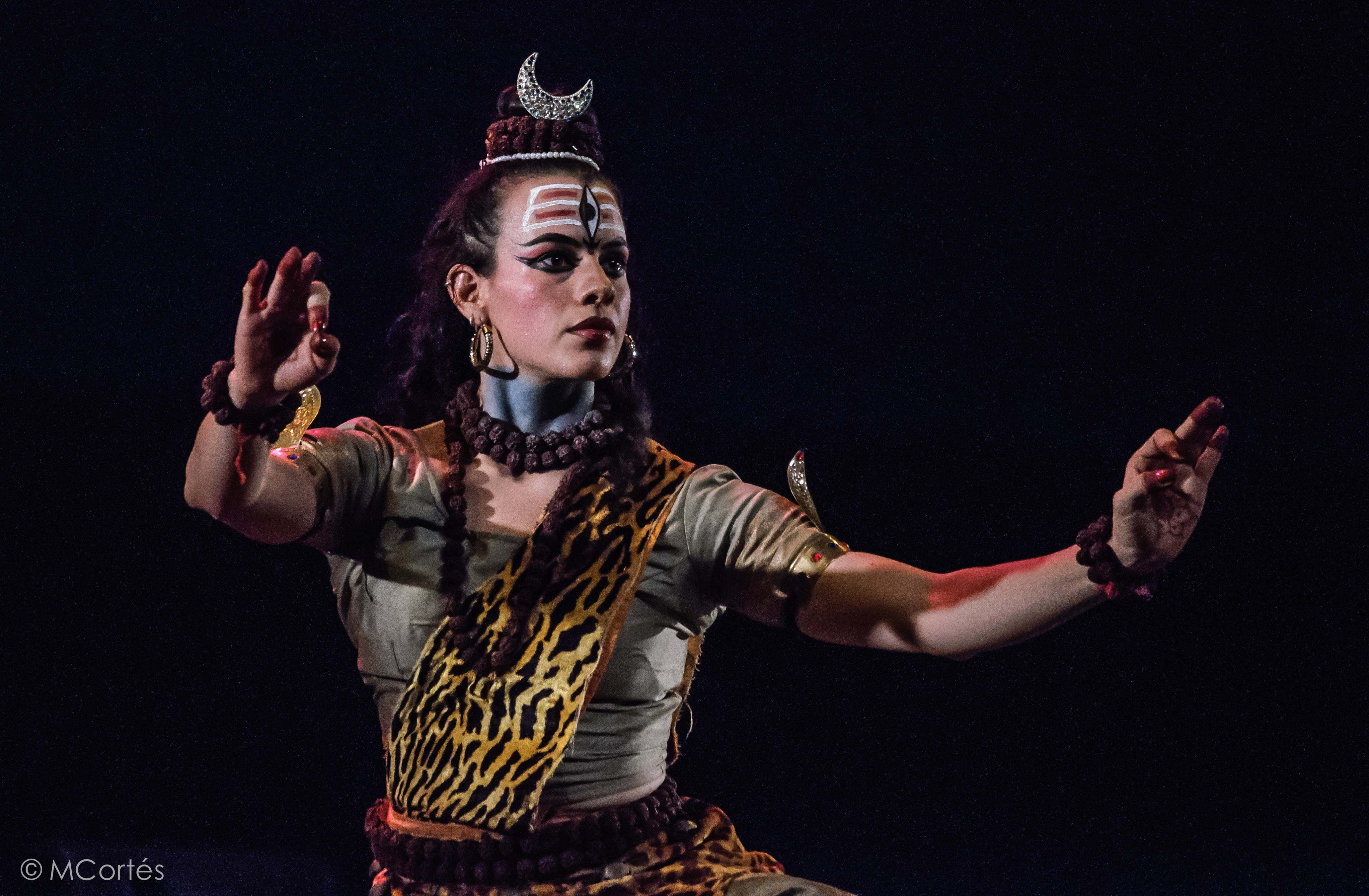


It is not uncommon to drive by the east Indian countryside with lush green fields and hear the resounding drumming beats of the Dhumsa, Dhol, Mandal, Chadchadi, alongside the piercing lyrical melodies of the Shahanai and Vamsi. The intermingling of these percussion and clarinet-esque instruments takes one back to the cries of war heard in battlefields. It would therefore explain the formations and drills with clanging swords and shields which one witness accompanying this music. Except for all these ‘soldiers’ in battle-ready positions performing these acrobatic stunts are women.
Long-held as a martial arts folk dance which was only acceptable to train and groom men in due to the physical strength and endurance training needed. Recent years with a steady decline of willing participants, lack of infrastructure and funds, and a general brain drain from villages to urban areas have seen a sharp rise in girls rising to the occasion in saving this endangered dance form. Most of the women come from agrarian rural pockets of the district of Mayurbhanj and are first-generation students of the dance which for over 300 years had royal patronage from the erstwhile royal family of the state taught only to select families by Ustaads and revered Gurus.


Mayurbhanj is the largest district of Odisha and one of its most populous situated in the north of Odisha bordering Jharkhand and Bengal. The district was ruled by the Bhanja dynasty since 697 AD and the family was known amongst other things for its keen interest in promoting art and architecture with a significant interest in developing and promoting the dance form known as Chhau. It is interesting to note, the emblem of the family and later on the state continues to be the graceful and rhythmic peacock.
There are three recognized styles of Chhau: Seraikella from the state of Jharkhand, Purulia from West Bengal, and Mayurbhanj from Odisha. It is a semi-classical Indian dance with martial, tribal, and folk traditions, with origins in one belt of eastern India. The one stark difference being that Mayurbhanj does not use the elaborate masks adorned by dances from Seraikella and Purulia. The dance ranges from celebrating martial arts, acrobatics, and athletics performed in festive themes of folk dance, to a structured dance with religious themes found in Shaivism, Shaktism, and Vaishnavism.
Like most of India’s artistic traditions, Chhau suffers from a lack of documentation to ascertain its roots and more importantly to gauge how old the dance is. Likewise, the origin of the name “Chhau” is also a subject of debate among scholars. According to some, the word “chhau” comes from “chhauni”, meaning “the cantonment”, which stresses the martial arts background of the dance and its connections with the paikas—soldiers, who might have staged dance performances to celebrate their victory on a battlefield. Some believe that it comes from the word “chhai” or “chhatak” while others derive it from the word “chaya” meaning “shadow”. Mayurbhanj Chhau is famous for its martial art exercises known as Parikhanda(“pari” meaning shield and “khanda” meaning sword), which are supposed to prepare the body for the actual dance.
The dance technique is based on chaalis and topkas—stylised walks choreographed after a keen observation of nature, e.g. baagh chaali (tiger walk), mayoor chaali (peacock walk), khel—variations of swordplay, and ufli—thirty-six movements describing everyday activities. Though Mayurbhanj chhau has been a male-dominated dance due to its martial arts roots, the royal family including the Maharani’s were greatly involved in the overall development of Mayurbhanj chhau. They not only took entire artist villages into patronage but invited visiting dignitaries for performances and sent dancers to prominent platforms to gain global recognition for their talent. A way to keep the tradition alive apart was to dedicate a season for it with an annual function spread across Chaitra Parva (April) but also of more interest was the competition between two competing schools by HH Maharaja Krushna Chandra Bhanjdeo in the 1800s to develop a sense of competition among the artistes, he named Uttar Sahi as the Sahi of Maharani and Dakhin Sahi as the Sahi of Maharaja. It is for this reason that the dance items of Uttar Sahi are female-centric, like Matrupuja , Mahisamardini, Tamudia Krushna etc.
Each school was groomed and their patronage was directly under the Queen or King with mammoth-sized performances held in the Chhau Padia or field with the entire state invited to watch in the center of the capital town, Baripada. In 1912 HH Maharaja Sriram Chandra Bhanja Deo took a special interest in promoting Mayurbhanj Chhau. He and his brother Routrai Saheb and cousin Bada Lal Saheb created a war dance with sixty-four dancers as an homage to the Paika rebellion called the war dance.
This choreography was presented in Calcutta in front of the British King George V and Queen Mary, a magnificent spectacle covered by the visiting foreign press at the time.
Mayurbhanj Chhau drew women participants around the 1950s and 60s with women of aristocratic families and from the families of Guru’s themselves closing the gender gap by playing the female part. In more recent years several global women performers, Sharon Lowen and Padmashree Ileana Citaristi among them managed to create a niche for themselves and become successful performers of this dance form. Mayurbhanj Chhau also drew the attention of contemporary dancers, such as Subhashree Nayak who began the nonprofit organisation Project Chhauni to promote this dying art form supported by the present royal family.
It was only with the determination of a few of the training institutes and vision of the old gurus that the art began to take a grassroots level prominence once again in the lush green state of Mayurbhanj, hence it was celebrated with much pomp and splendour with the beating of drums and shrill echoes of the shahnahi across the town and in The Belgadia Palace when in 2010 the Chhau dance was finally inscribed in the UNESCO’s Representative List of the Intangible Cultural Heritage of Humanity.
Akshita M. Bhanj Deo is director of The Belgadia Palace, and Communication Strategist at Wadhwani Al.